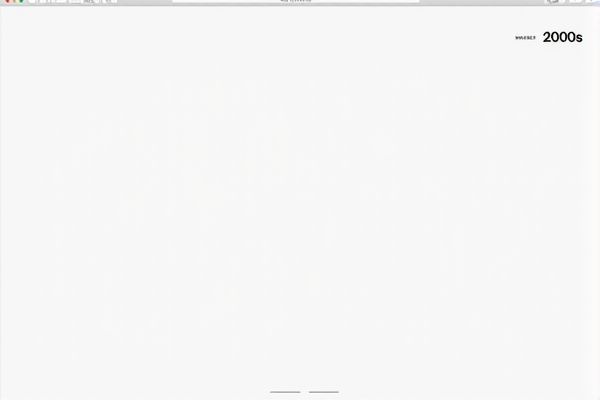
Discover endless creativity with our online random website generator inspired by the vibrant 2000s era. Instantly create unique, retro-style web pages that capture the nostalgia of early internet design. Explore playful layouts, bold colors, and iconic elements to bring your digital projects to life effortlessly.
Online tool for random website generator 2000s
Explore our 2000s random website generator featuring a variety of ready-to-use samples. Simply enter your own list or use the provided ones, then click the button to get a randomized selection. Instantly receive a single random value for your needs.Data Source
Single Result
Multiple Results
Exploring the Rise of Random Website Generators in the 2000s
The early 2000s saw a surge in random website generators, driven by advancements in web technologies like Flash and AJAX that enabled dynamic content creation. These tools empowered users to create unique, unpredictable web pages with minimal coding knowledge, sparking creativity and experimentation on the internet. The rise of platforms such as The Useless Web and We Want to Know highlighted the cultural fascination with randomness and novelty in digital experiences during this era.
Key Features of Early 2000s Website Generators
Early 2000s website generators featured simplistic HTML templates, limited customization options, and drag-and-drop interfaces that allowed users with minimal coding knowledge to create basic websites quickly. They often included pre-designed graphics and basic navigational elements such as buttons and menus, optimizing user accessibility and speed. These generators prioritized ease of use over advanced functionality, making them essential tools for small businesses and personal websites during the era.
Popular Random Website Generator Tools of the Decade
Popular random website generator tools of the 2000s include platforms like The Useless Web, StumbleUpon, and RandomWebsite.com, which provided users with spontaneous access to a variety of unique sites. These tools leveraged early web algorithms to deliver diverse content tailored to user interests or pure randomness. Their simplicity and novelty captured widespread attention, making them essential for exploration and entertainment during the growth of the internet era.
Impact on Web Design Trends in the 2000s
Random website generators in the 2000s revolutionized web design by enabling rapid prototyping and democratizing site creation with template-based tools. These generators accelerated the adoption of vibrant colors, bold typography, and experimental layouts that defined the early internet aesthetic. Their influence paved the way for dynamic, user-friendly interfaces and set the foundation for modern content management systems and drag-and-drop builders.
User Experience and Accessibility Innovations
Random website generators from the 2000s revolutionized User Experience by automating unique, visually dynamic webpage creation without requiring coding skills, significantly broadening web design accessibility. These tools integrated early responsive design principles and basic ARIA (Accessible Rich Internet Applications) attributes to enhance navigation for users with disabilities, promoting inclusivity. By simplifying content customization and embracing emerging web standards, they laid foundational innovations for today's accessible, user-centric online interfaces.
Influence on Personal and Hobbyist Web Projects
Random website generators from the 2000s played a pivotal role in democratizing web design, enabling personal and hobbyist creators to swiftly launch unique online spaces without extensive coding knowledge. These tools amplified experimentation with early internet aesthetics, fostering creativity and diverse content across emerging digital communities. Their influence persists as foundational catalysts for user-generated web projects and grassroots digital expression.
Common Templates and Design Styles from the Era
Random website generators from the 2000s often featured common templates such as tiled backgrounds, marquee text, and hit counters, reflecting the early web's experimental aesthetic. Design styles emphasized bright, clashing colors, animated GIFs, and table-based layouts with heavy use of inline styles and pixelated icons. These generators captured the era's nostalgia by replicating the chaotic yet charming vibe of early internet pages, prioritizing user customization with drag-and-drop tools and pre-built visual elements.
Security and Privacy Considerations in 2000s Generators
2000s random website generators often lacked robust security measures, exposing users to risks like malware and phishing attacks due to insufficient encryption and authentication protocols. Privacy considerations were minimal, with many generators collecting user data without transparent policies or secure storage practices, increasing vulnerability to data breaches. Users needed to exercise caution by avoiding generators from untrusted sources and limiting the sharing of sensitive information.
Transition to Modern Web Creation Tools
The random website generator of the 2000s offered basic templates and limited customization, reflecting early web development constraints. The transition to modern web creation tools introduced drag-and-drop interfaces, responsive design frameworks, and AI-driven content generation, significantly enhancing user accessibility and design flexibility. Modern platforms integrate SEO optimization, real-time collaboration, and extensive plugin ecosystems, revolutionizing how websites are built and maintained today.
Legacy and Nostalgia: Remembering 2000s Website Generators
2000s website generators played a crucial role in democratizing web design by offering easy-to-use templates and drag-and-drop features that preserved the early internet aesthetic. These tools evoke nostalgia with their pixelated graphics, animated GIFs, and quirky fonts that defined the era's DIY digital culture. Preserving these legacy website generators provides valuable insight into the evolution of web development and the roots of modern online creativity.
 azrandom.com
azrandom.com